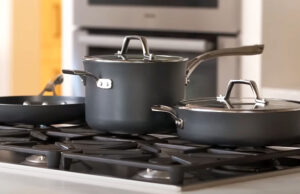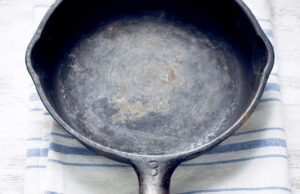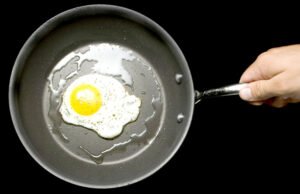As an Amazon Associate, I earn from qualifying purchases at no extra cost to you.
Kenmore Dishwasher Not Washing? Fix It Fast (6 Steps)
Have you ever opened your Kenmore dishwasher after a cycle and found dirty dishes staring back at you? Frustrating, right? The good news is there are clear reasons and real solutions. In this article, you will learn how to fix your Kenmore dishwasher not washing problem with simple methods that actually work. Let’s dig in and bring your machine back to life.
Check the Water Supply
The first and most important thing to look at is the water supply. Without enough water, your Kenmore dishwasher cannot wash your dishes properly. Sometimes the problem is not even inside the machine but with the water coming into it. So it makes sense to start here before going deeper.
Begin by checking if the water valve connected to the dishwasher is fully open. Many times, someone may accidentally turn it halfway while working under the sink. If the valve is closed or only partly open, water cannot enter with the right flow. That alone will make the dishwasher struggle.
Next, take a close look at the water line. Over time, the line can get kinked or bent behind the dishwasher. This limits the water from reaching the machine. Gently pull the dishwasher a little forward to see the hose. If you find bends, straighten them out right away.
Also, do not forget about the water pressure. A dishwasher needs steady pressure to work well. If you notice low pressure in your sink too, then the whole house may have an issue. In such cases, calling a plumber is the safest way to handle it.
Another thing you can do is run the hot water in your sink before starting the dishwasher. This small trick helps the machine start with hot water right away. Dishwashers clean better with hot water, so this step can make a big difference.
Make sure you also check for leaks. Even small leaks along the line can stop water from flowing the right way. If you see wet spots under the sink or around the dishwasher, you know there is a problem. Fixing the leak will often bring the machine back to normal.
- Make sure water valve is open
- Straighten the water hose if bent
- Run hot water before starting a cycle
- Fix leaks in water line
- Check house water pressure
Clean the Spray Arms
Spray arms are like the heart of the dishwasher. They spin and spray water all around the tub to clean the dishes. But when they get clogged, the water cannot reach every corner. Then you end up with dirty or half-washed dishes. That is why checking the spray arms is very important.
Start by removing the lower spray arm. You can usually lift it right off or twist it, depending on your model. Once you have it in your hand, check each little hole. Even a small piece of food, like rice or pasta, can block it. Use a toothpick or a thin wire to clean out the holes.
Do the same for the upper spray arm. This one is often held in place with a simple screw. Unscrew it and wash it under running water. Hold it up against the light to see if all holes are clear. If not, keep cleaning until water passes through freely.
Sometimes grease builds up inside the spray arms. If warm water is not enough, soak them in vinegar for 30 minutes. Vinegar breaks down grease and loosens any mineral deposits that might be stuck. After soaking, rinse well with clean water.
After cleaning both arms, put them back in place and give them a spin by hand. They should rotate freely without sticking. If they feel stiff, that means they are not aligned right. Reinstall them until they move smoothly.
This small cleaning task can bring instant results. When water sprays with full force again, the dishes come out sparkling. Many people are surprised by how much difference it makes.
- Remove lower spray arm and clean holes
- Take off upper spray arm and clear blockages
- Soak in vinegar to remove grease and deposits
- Rinse well and reinstall
- Spin arms by hand to check movement
Inspect the Filter and Drain
Another common reason for a Kenmore dishwasher not washing is a clogged filter. The filter catches food bits, but if it is full, water cannot flow the way it should. When that happens, dishes stay dirty, and sometimes the dishwasher even smells bad.
Open the bottom of the dishwasher and find the filter. Most Kenmore models have a round or flat filter that twists off easily. Lift it out and take a look. If you see food, grease, or paper stuck in it, that is your problem. Clean it under running water with a soft brush.
While you are there, check the drain area too. Sometimes bits of glass, seeds, or even labels from jars get stuck. These block water from leaving the machine. If water cannot drain, the wash cycle cannot restart with fresh water. Carefully remove any debris you see.
It is also smart to check the drain hose. If the hose is bent or clogged, dirty water will not drain out. Disconnect the hose and flush it with water to clear it. Make sure it is connected tight again when you are done.
Cleaning the filter once a week is a good habit. It takes only a few minutes but saves you from big problems later. Many dishwasher failures come from poor cleaning, not from broken parts.
- Remove and wash the filter
- Check drain area for stuck debris
- Clean the drain hose if blocked
- Rinse filter weekly for prevention
- Keep drain area clear and fresh
Test the Detergent and Dispenser
Detergent plays a big role in how clean your dishes come out. If the detergent is old, clumped, or stored wrong, it loses power. And if the dispenser does not open at the right time, the soap never reaches the dishes. Both things can make you think the dishwasher is broken when it is not.
First, check the detergent itself. Powder and tablets can get hard if they sit too long in a damp place. Liquid detergent can also lose strength over time. Use fresh detergent that is stored in a cool, dry spot. This simple change often helps.
Next, open the dispenser and inspect it. Sometimes the latch gets sticky or the spring gets weak. If the door does not open fully, the detergent stays trapped inside. Clean the dispenser with warm soapy water and check if the door snaps shut and opens freely.
Also, make sure you are using the right amount. Too much detergent can create extra suds, and too little cannot clean properly. Follow the instructions on the package for the best balance. If you have hard water, using a rinse aid can help the detergent work better.
Finally, run a cycle and listen for the click sound when the dispenser door opens. If you do not hear it, the mechanism may be faulty. Replacing the dispenser is easy and can often be done without a repairman.
- Use fresh detergent only
- Store detergent in a dry place
- Clean the dispenser door and latch
- Use the right amount of soap
- Add rinse aid for hard water
Examine the Motor and Pump
The motor and pump are what push water through the spray arms. If they do not work right, your dishwasher cannot clean no matter what. This part is a bit more serious, but still worth checking before calling for help.
Listen closely when your dishwasher runs. If you hear humming but no water spray, the motor might be jammed. Sometimes small objects slip past the filter and block the impeller. Turning off the power and opening the motor housing will let you check for blockages.
If you find something stuck, remove it carefully. Small bones, glass, or even toothpicks can jam the pump. Once cleared, the motor should spin freely again. Always make sure the power is disconnected before touching these parts.
On the other hand, if the motor does not make any sound at all, it may be burned out. This is not something you can easily fix at home. At that point, calling a professional is usually the best option.
However, before you replace anything, make sure the wiring is fine. Loose or burned wires can stop the motor even if it is healthy. A quick check with a flashlight can reveal if the wires look damaged.
- Listen for motor sounds during wash
- Remove items blocking the pump
- Disconnect power before working
- Check wires for damage
- Call a pro if motor is dead
Run a Deep Cleaning Cycle
Sometimes the problem is not a broken part but simple buildup inside the dishwasher. Grease, soap scum, and hard water deposits can all stop the machine from washing well. A deep cleaning cycle can bring it back to life without any tools.
Start by placing a cup of white vinegar on the top rack. Run the dishwasher on the hottest cycle. Vinegar helps dissolve grease and removes odors at the same time. This is one of the easiest ways to refresh your machine.
After the vinegar cycle, sprinkle a cup of baking soda on the bottom of the tub. Run a short hot cycle again. Baking soda scrubs away stains and leaves the inside fresh. Many people are shocked at how clean their dishwasher looks after this two-step process.
You can also buy dishwasher cleaner tablets from the store. They are made for removing limescale and grease. Using one every month keeps the machine running at its best.
Make it a habit to deep clean your dishwasher once a month. It does not take much time, but it prevents big problems in the future. A clean dishwasher always washes better, and your dishes come out spotless.
- Place vinegar cup on top rack and run hot cycle
- Sprinkle baking soda and run short cycle
- Use store cleaner tablets monthly
- Repeat cleaning each month
- Prevent grease and mineral buildup
Final Thoughts
A Kenmore dishwasher not washing can feel stressful, but most of the time it is not a disaster. With simple checks and cleaning, you can often fix it yourself. The key is not to ignore the signs. Regular care and small habits keep your dishwasher working strong for years. Take action today, and enjoy clean dishes again without the stress.
| Problem | What to Do |
|---|---|
| No water | Check valve, hose, pressure |
| Dirty spray arms | Remove and clean holes |
| Clogged filter | Wash filter, clear drain |
| Soap not working | Use fresh detergent, clean dispenser |
| Motor not running | Remove blockages, check wiring |
| Buildup inside | Run vinegar and baking soda cycles |
Frequently Asked Questions (FAQs)
Is it normal for my Kenmore dishwasher to leave some water at the bottom?
Yes, a small amount of water at the bottom is normal. It helps keep the pump seal from drying out. But if you see more than an inch of water, that is not normal. It may mean the drain hose or filter is clogged. Cleaning the filter and checking the hose usually fixes this problem.
Can a Kenmore dishwasher work without hot water?
It can try, but it will not wash well. Hot water is important because it breaks down grease and food much better than cold water. If hot water does not reach your dishwasher, the dishes will come out greasy or spotty. Always run your sink hot water first before starting the machine for better results.
Is it safe to use vinegar in my Kenmore dishwasher?
Yes, vinegar is safe and effective when used the right way. It cuts grease, removes odors, and helps dissolve hard water deposits. However, do not overuse it. Running a vinegar cycle once a month is enough. If you use it too often, it could damage rubber parts inside the dishwasher over time.
Can detergent pods cause my dishwasher not to wash well?
Yes, sometimes pods do not dissolve fully. This happens more when the water is not hot enough. A half-dissolved pod cannot clean properly, leaving dishes dirty. Make sure the water is hot, and place the pod in the right spot in the dispenser. If the problem continues, try switching to a different brand or powder detergent.
Do I need to clean the filter often in my Kenmore dishwasher?
Yes, cleaning the filter is one of the most important tasks. If the filter is dirty, water cannot flow right, and dishes will not get clean. Most people should clean the filter once a week, especially if they use the dishwasher daily. It only takes a few minutes and prevents big issues later.
Is it worth fixing a Kenmore dishwasher that does not wash?
In many cases, yes. Most problems like clogged spray arms, dirty filters, or bad detergent are easy and cheap to fix. Even if the motor is the issue, sometimes replacing it is still cheaper than buying a new machine. The key is to check the basics first before deciding to replace the whole dishwasher.
Can a clogged drain make my Kenmore dishwasher stop washing?
Yes, a clogged drain can affect the whole wash cycle. If dirty water cannot leave the tub, the dishwasher cannot fill with fresh water. This means your dishes will sit in old, dirty water. Clearing the filter and checking the hose often solves this issue right away.
Do I need a professional to repair my Kenmore dishwasher?
Not always. Many problems can be fixed at home with simple cleaning and checks. Things like clogged spray arms, dirty filters, or detergent issues are easy for anyone. But if you find a dead motor, damaged wiring, or serious leaks, then calling a professional is the best move. It saves time and ensures safety.




